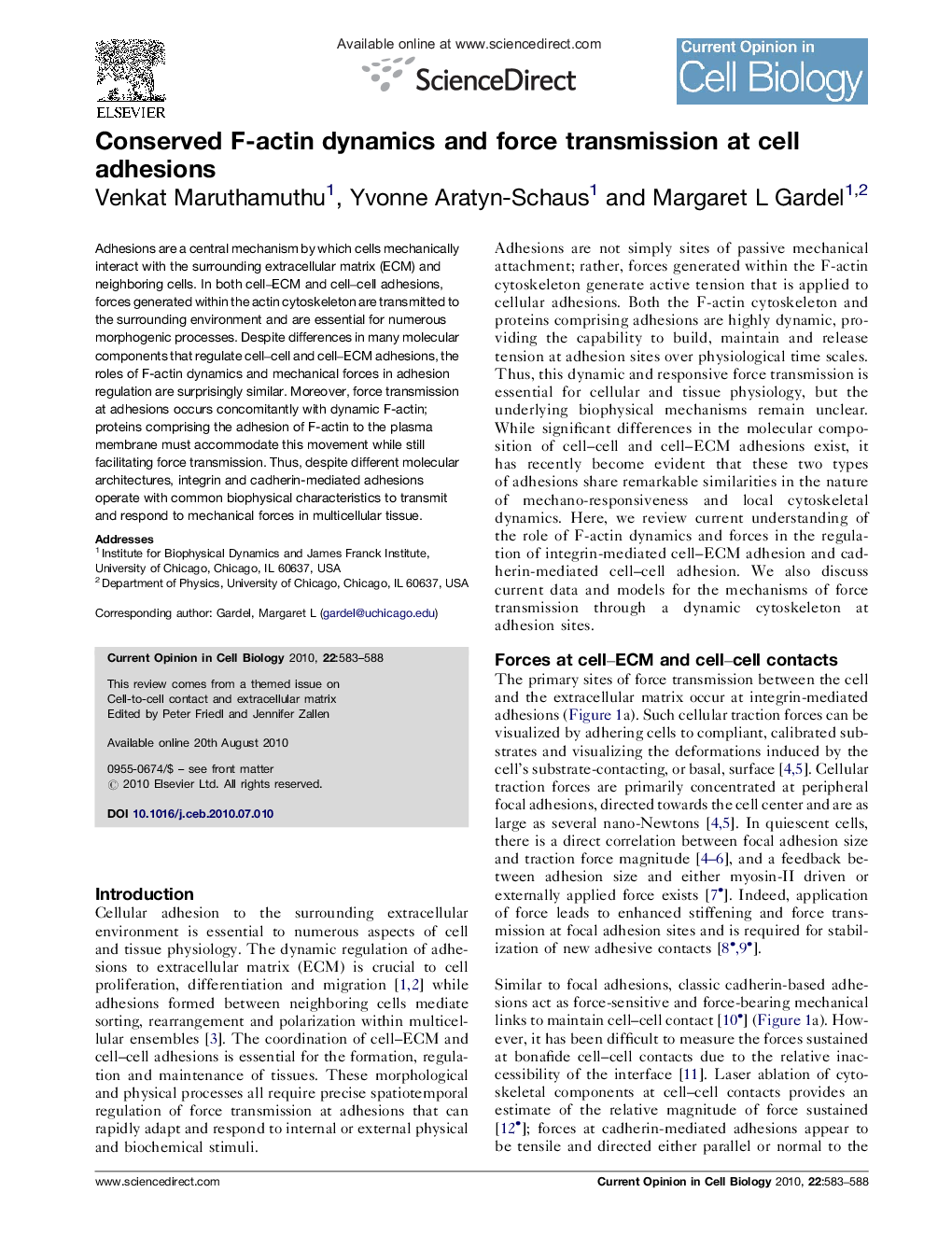| Article ID | Journal | Published Year | Pages | File Type |
|---|---|---|---|---|
| 2169955 | Current Opinion in Cell Biology | 2010 | 6 Pages |
Adhesions are a central mechanism by which cells mechanically interact with the surrounding extracellular matrix (ECM) and neighboring cells. In both cell–ECM and cell–cell adhesions, forces generated within the actin cytoskeleton are transmitted to the surrounding environment and are essential for numerous morphogenic processes. Despite differences in many molecular components that regulate cell–cell and cell–ECM adhesions, the roles of F-actin dynamics and mechanical forces in adhesion regulation are surprisingly similar. Moreover, force transmission at adhesions occurs concomitantly with dynamic F-actin; proteins comprising the adhesion of F-actin to the plasma membrane must accommodate this movement while still facilitating force transmission. Thus, despite different molecular architectures, integrin and cadherin-mediated adhesions operate with common biophysical characteristics to transmit and respond to mechanical forces in multicellular tissue.
